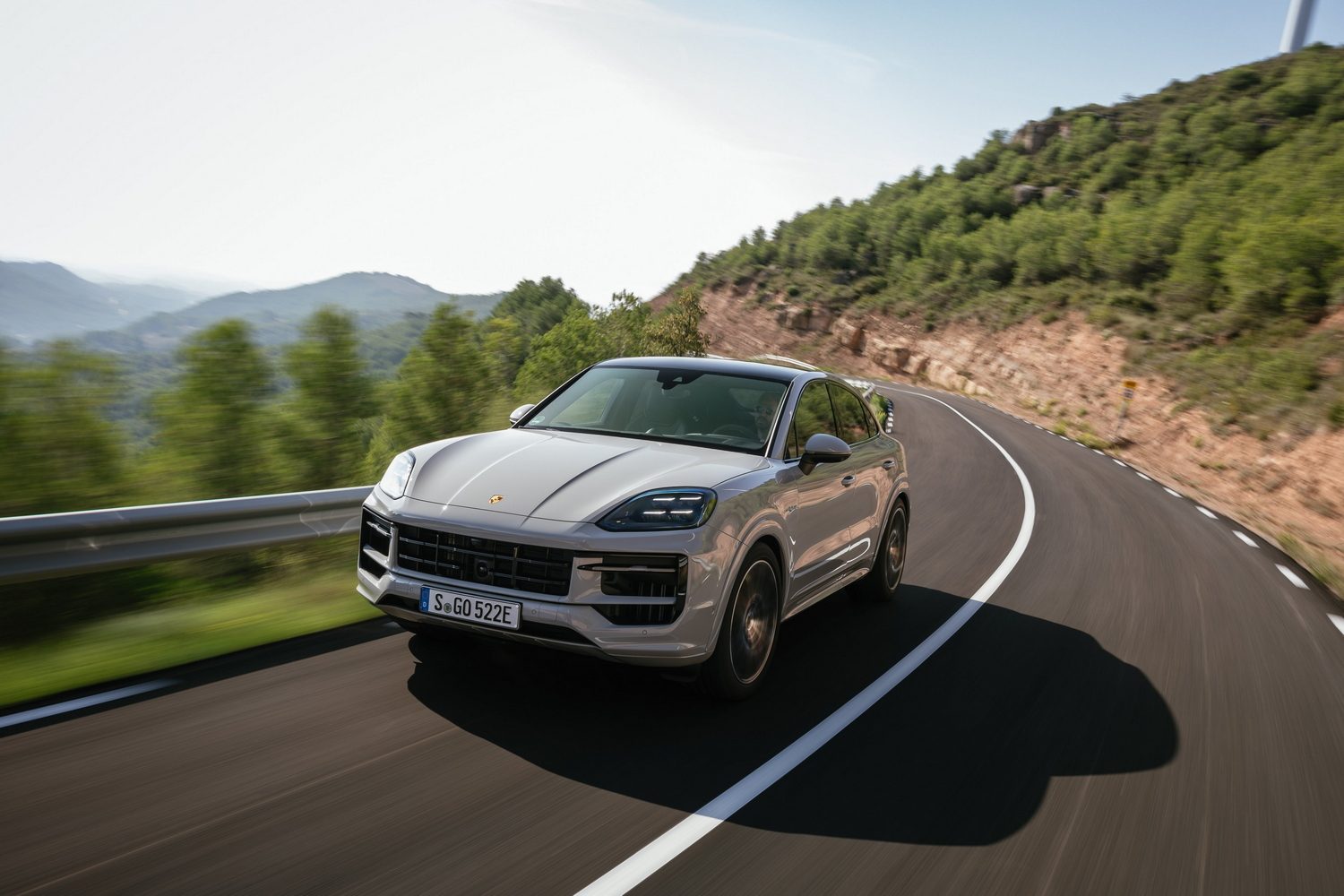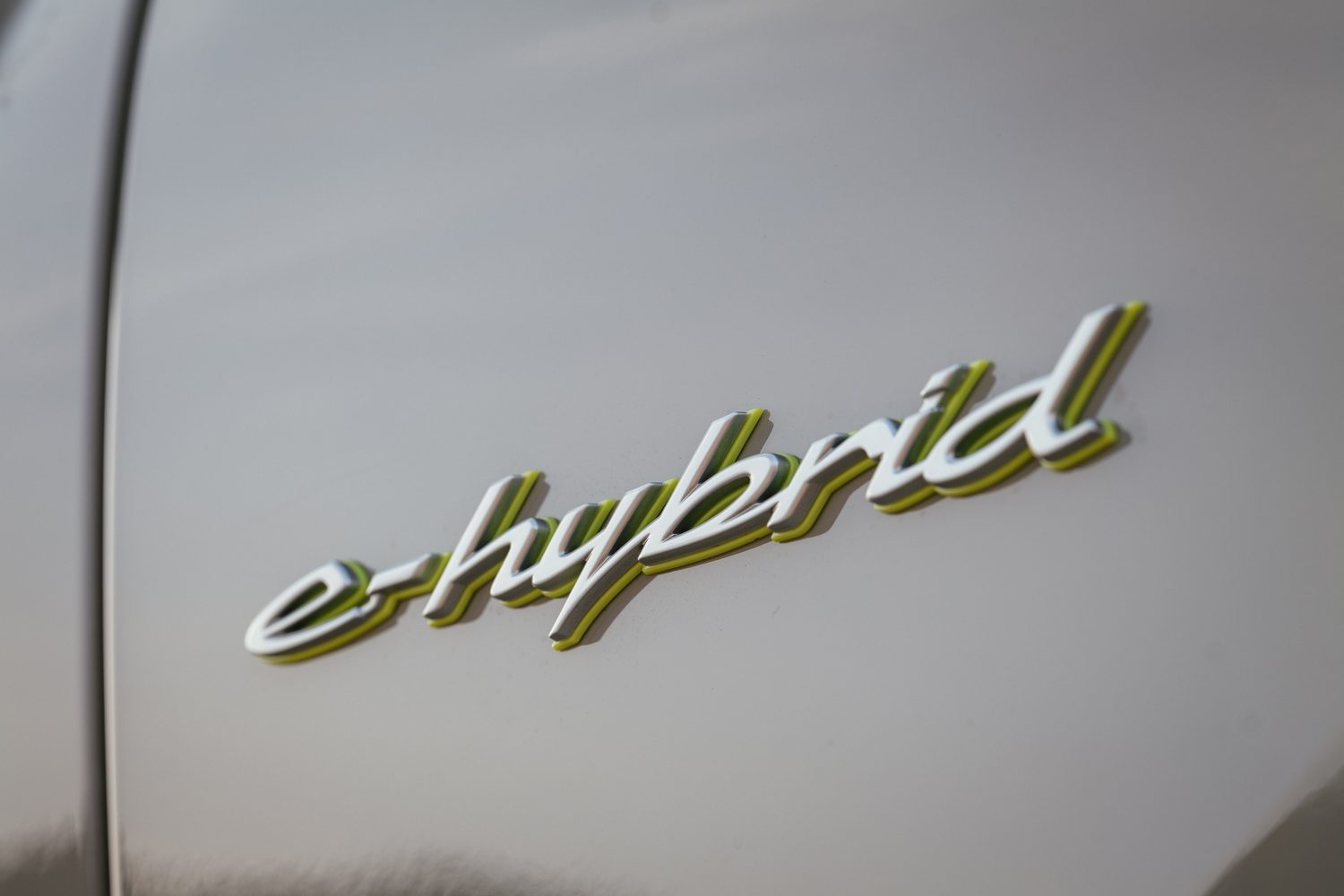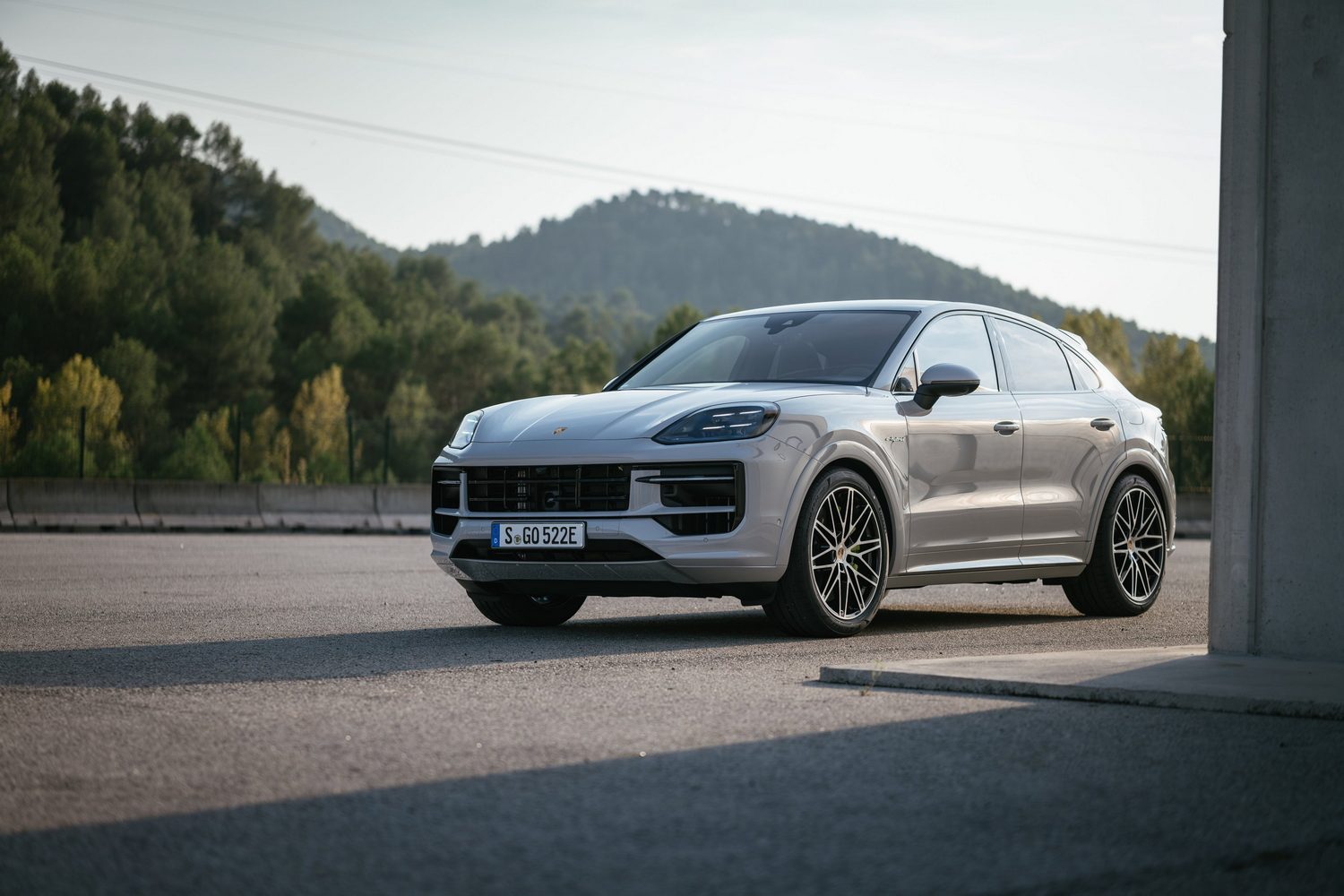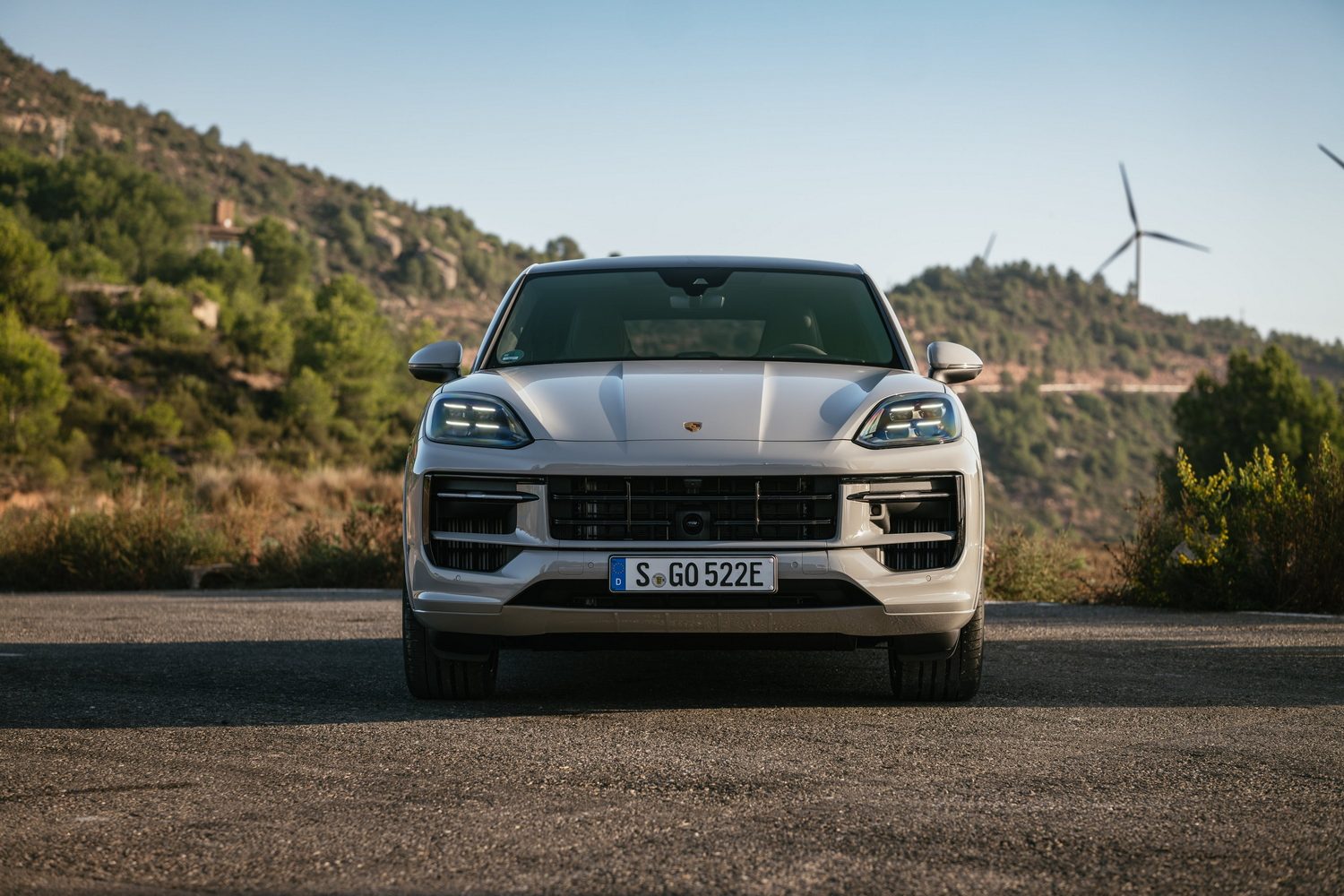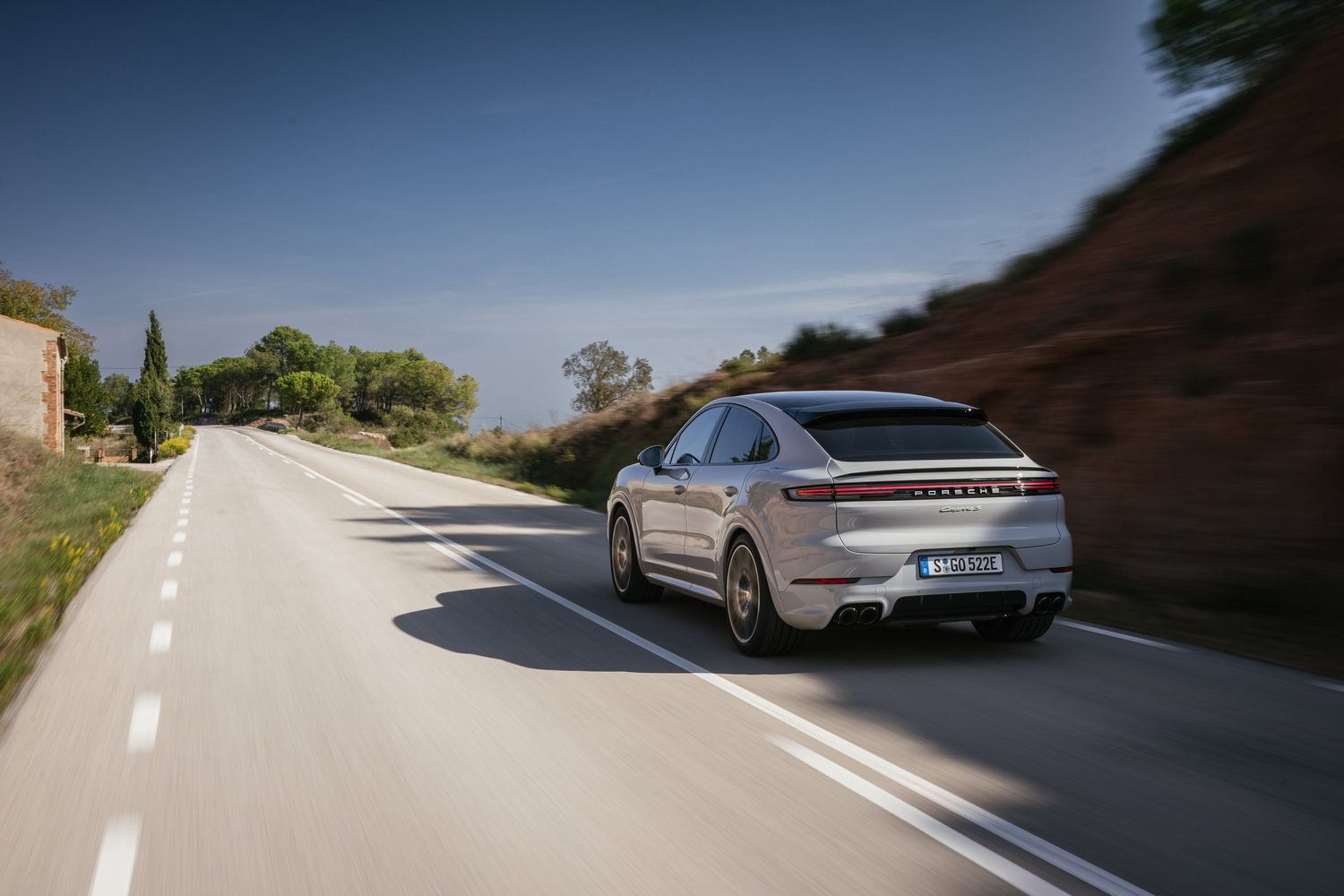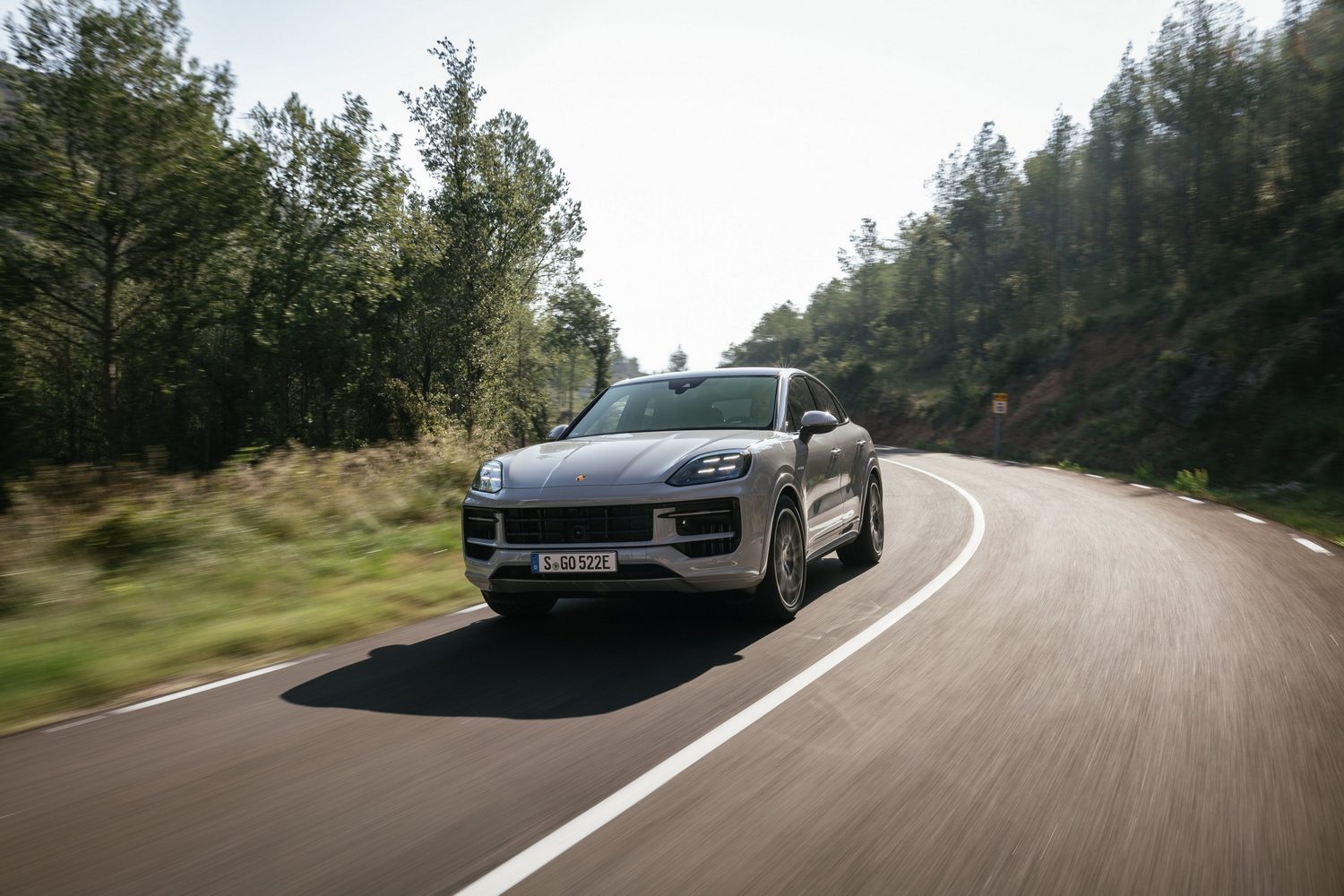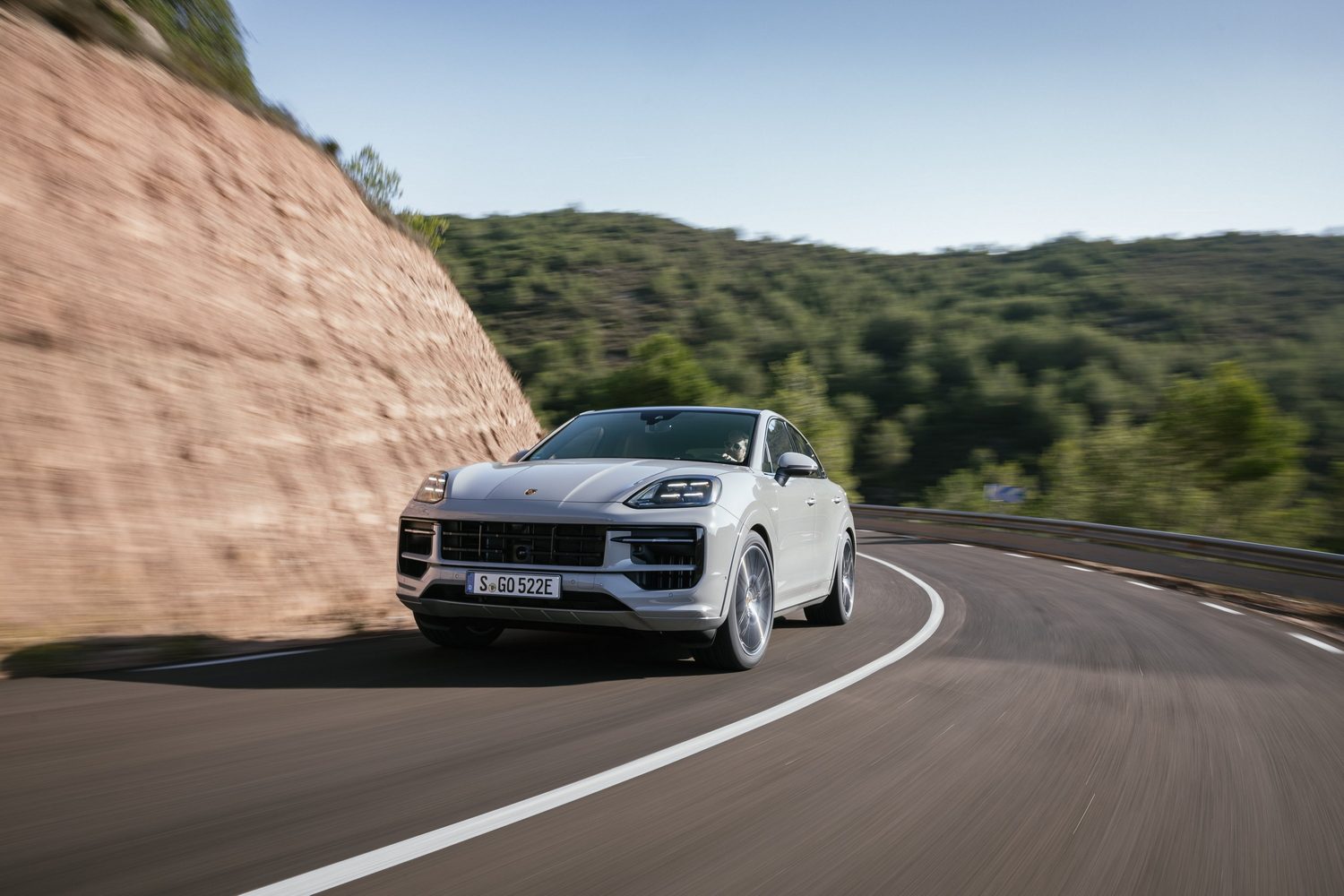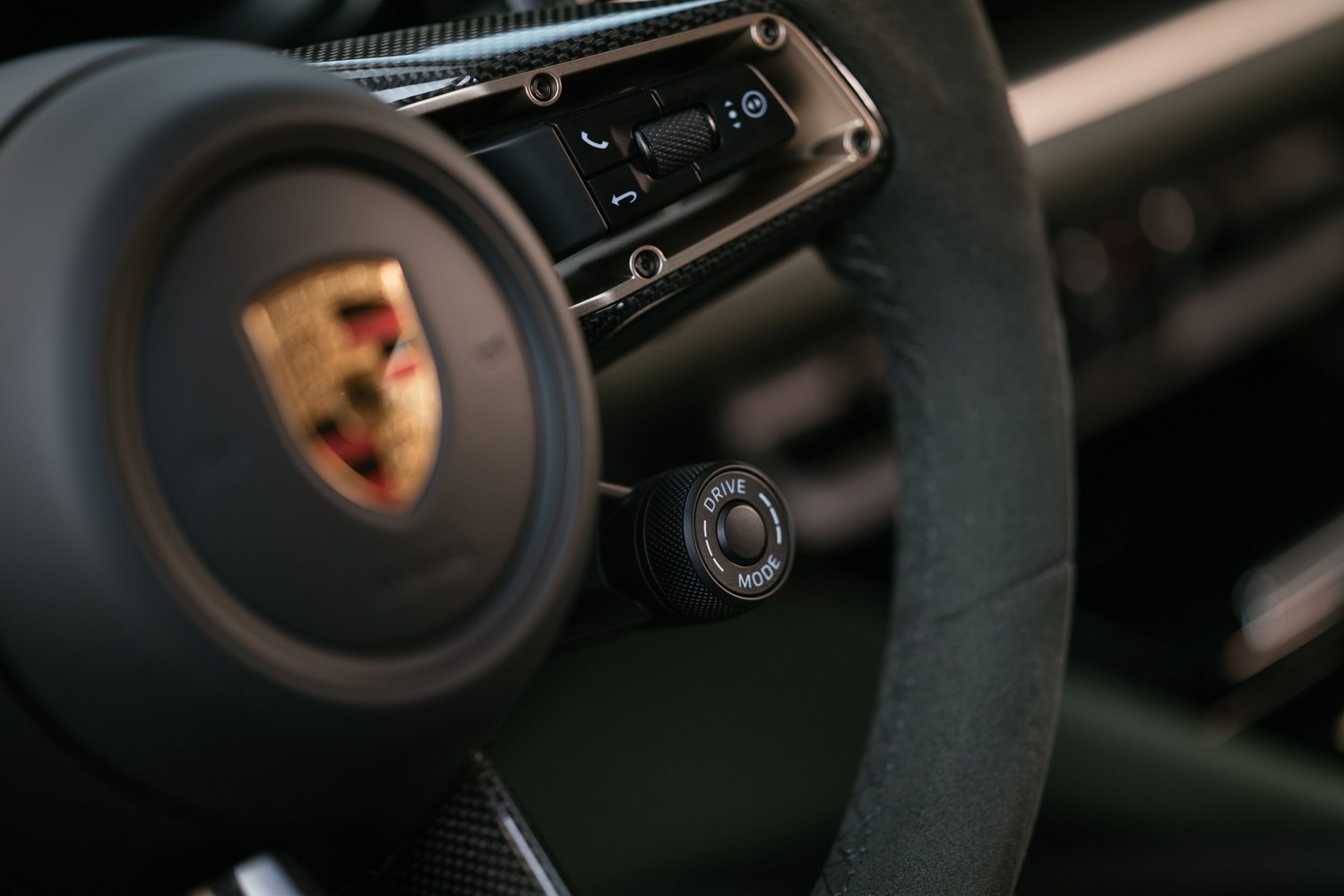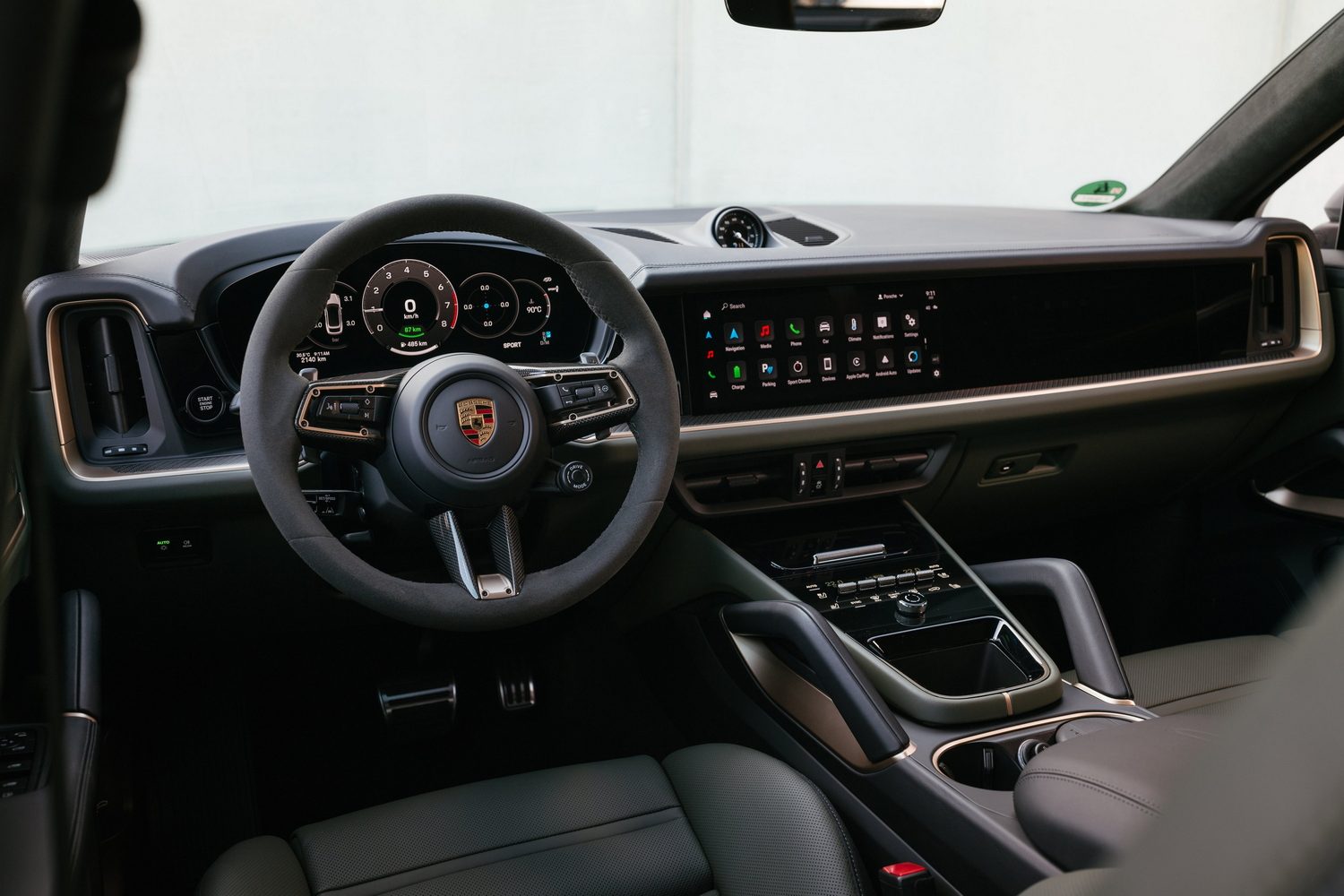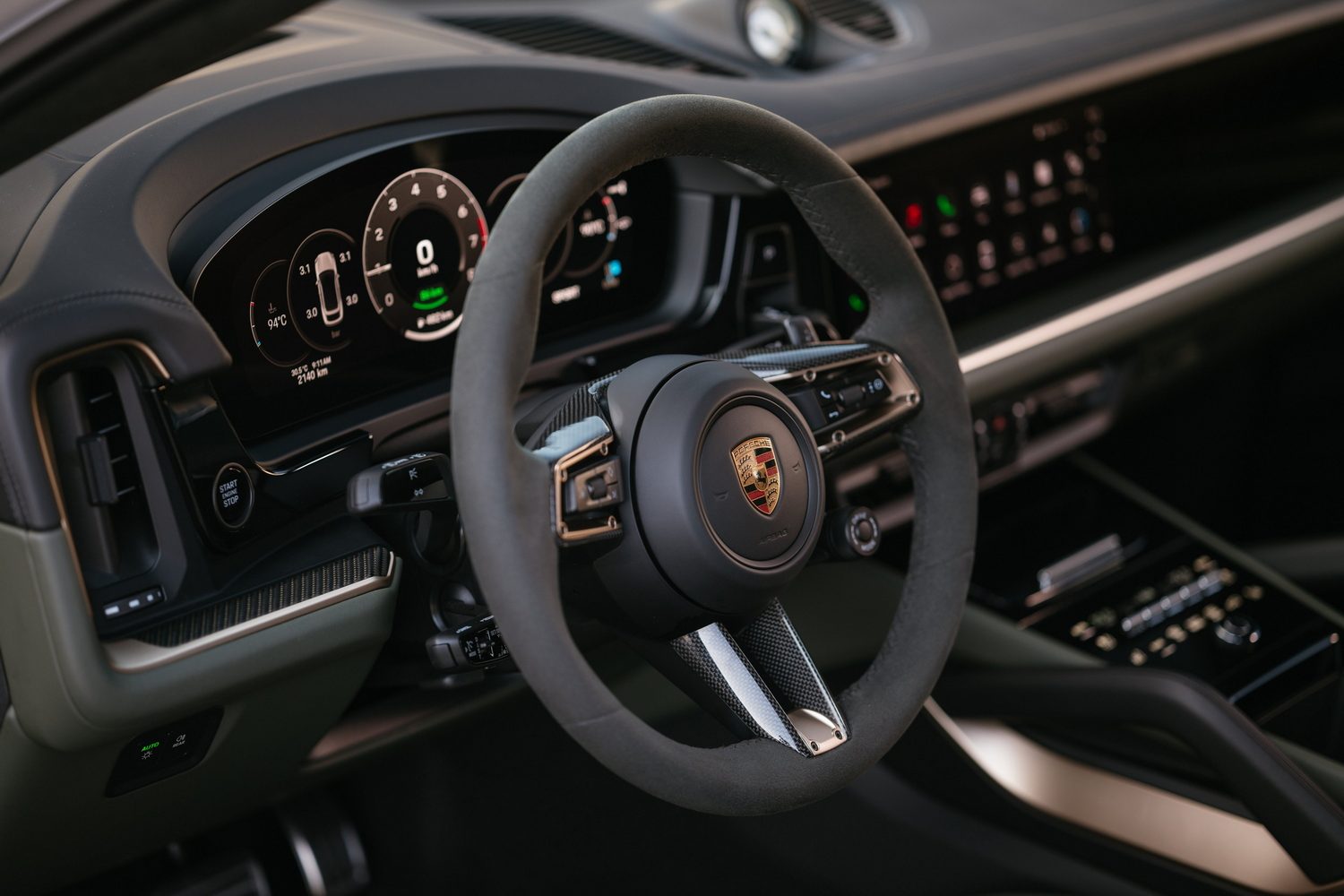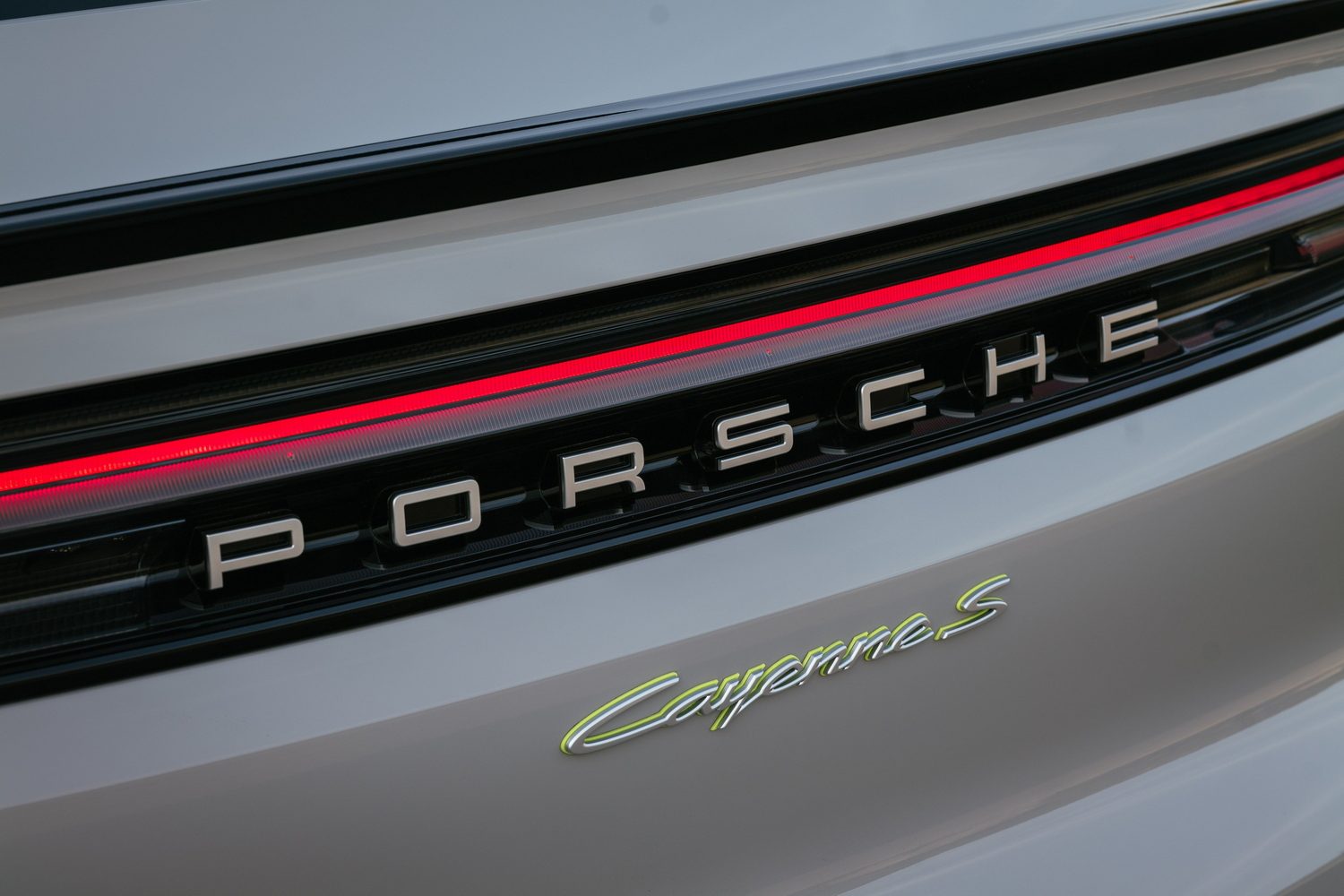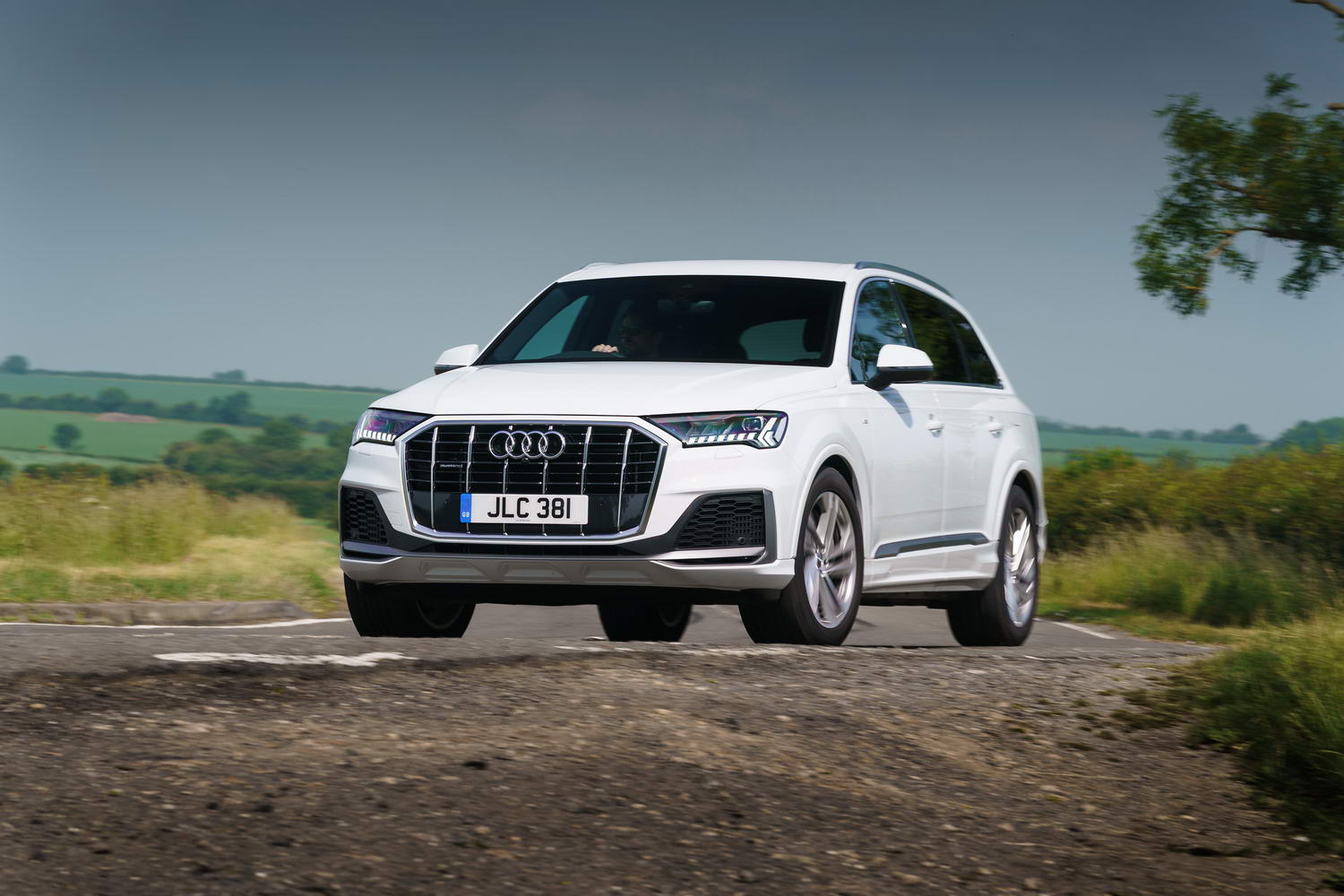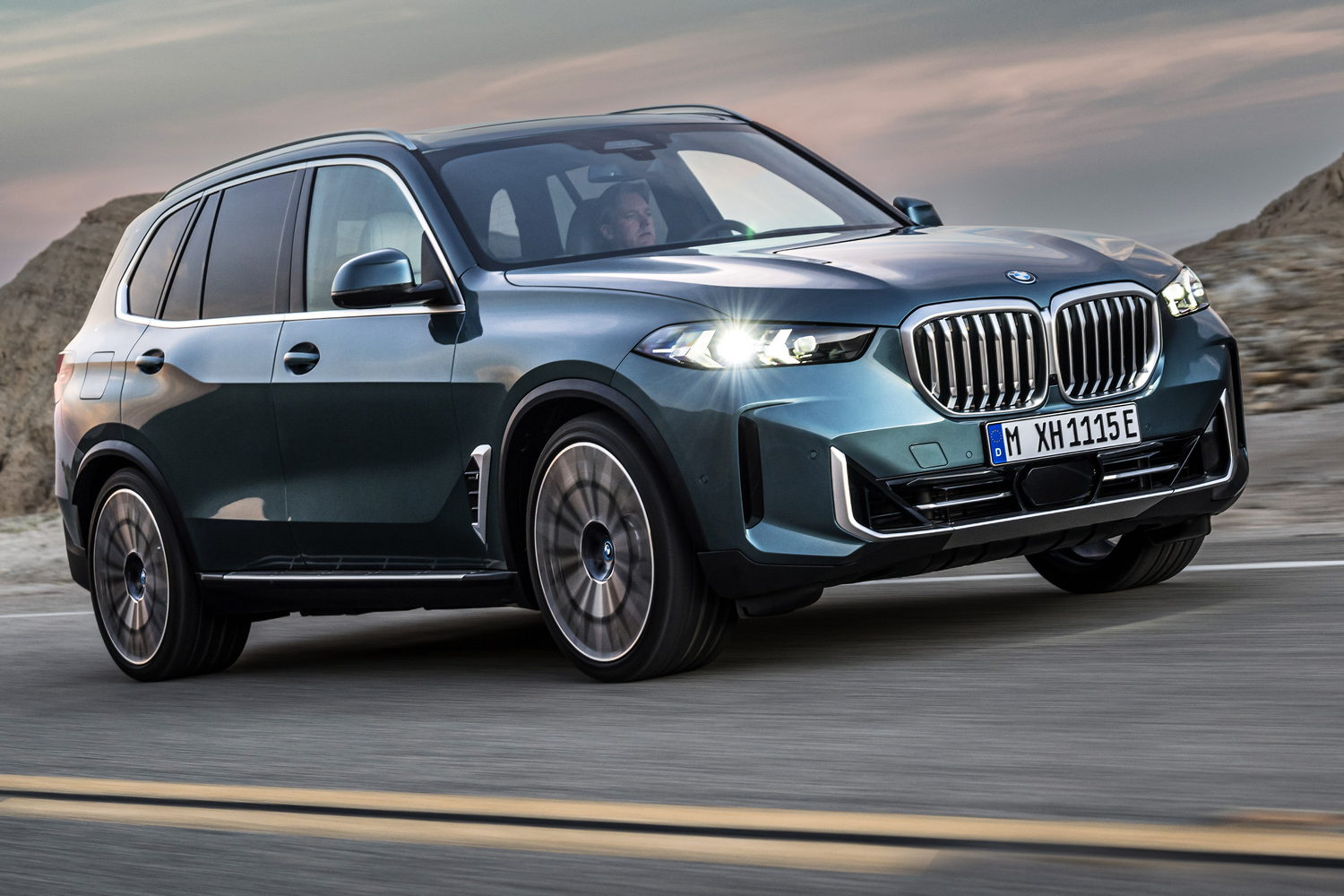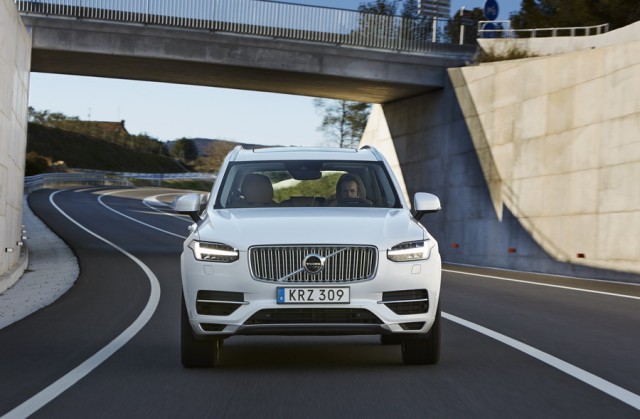Porsche has already subjected its third-generation Cayenne SUV to a facelift and technical update, giving us the V8-powered S and plug-in hybrid electric vehicle (PHEV) E-Hybrid models already. But now, the German company is adding more variants - and they're all PHEVs. The high-power Turbo E-Hybrid and Turbo E-Hybrid with GT Package cars replace the old Turbo S E-Hybrid, and there's an all-new derivative, the Cayenne S E-Hybrid tested here. Does it make sense as the best balance between economy and performance?
In the metal
All updated Cayennes feature the facelift which came into effect at the start of 2023. With the big Porsche still available as a regular SUV-shaped version and also the less-upright Coupe we're testing here, the main changes amount to a new design of bonnet and wider front wings, enhancing the visual width of the car as you approach it. The matrix LED headlights have a more technical look, while the lower grilles and intakes are all reshaped to match. At the back, the big change for the SUV is that its number plate drops off the tailgate and down into the bumper, matching the aesthetic of the Coupe, but aside from that there's a more defined full-width light bar and various minor detail adjustments. Overall, the effect is pleasing and the Cayenne, once the ugly duckling of the Porsche family, is a fine-looking thing in the 2020s.
The E-Hybrid models feature the part-electrified signifiers that Porsche has always used, namely an 'e-hybrid' italicised script on the front wings, and then what look like fuel filler caps on both of the rear wings - one being the actual cover for the fuel tank and the other being the Type 2 AC charging port for the onboard electrical systems. Those E-Hybrid badges up front and the model designation on the boot lid are tinged with acid green highlights as standard, while the brake callipers are painted to match, but both of these PHEV-identifying details can be done away with if the owner specifies an exterior detailing option which turns all the car's emblems black, while models fitted with higher-spec Porsche Ceramic Composite Brakes (PCCB) switch the callipers to bright yellow.
Inside, again there's nothing major which denotes you're in a plug-in hybrid Cayenne, unless you look carefully at the infotainment or digital displays behind the steering wheel and clock the 'remaining battery range' gauge, or you're cycling through various sub-menus of the 12.3-inch Porsche Communication Management (PCM) infotainment and you find a screen which shows hybrid energy flow and so on.
The key changes include the 12.6-inch digital instrument cluster, adopted from the all-electric Taycan range, the shift of the gear selector from the transmission tunnel to a new location on the dashboard next to the steering wheel and the option of yet another 10.9-inch digital screen for the front-seat passenger if you want it. Material quality is superb across the board, everything looks great and operates fluidly, and generally the Cayenne's cabin is wonderful.
That said, the PHEV models do lose boot space when compared to the pure-petrol Cayennes still on sale. The Cayenne Coupe E-Hybrids have 404 litres with all seats in use, rising to 1,344 litres with the second row folded away; the more practical PHEV SUVs increase those numbers to 545-1,557 litres, or thereabouts (depending on the exact model). But when you consider the regular V6- and V8-powered Cayenne Coupes have more like 600 litres of cargo capacity, with the SUV packing anything upwards of 700 litres, you can see there's a moderate practicality hit in having an E-Hybrid.
Driving it
The main change to all Porsche Cayenne E-Hybrids as part of the facelift is a more powerful electric motor - increased from 100kW/136hp and 400Nm previously, to 130kW/176hp and 450Nm now. The motor is still housed within the transmission.
Of course, the electric motor is having to shift a sizeable old beast when the petrol engine switches off, so to compensate the company has also increased the size of the battery pack on the Cayenne PHEVs. Starting life with a 14.1kWh unit, these E-Hybrids went to a 17.9kWh battery in 2020, but there's another 8kWh on offer now for a total of 25.9kWh, around 22kWh of which is usable. That results in some serious electric-driving range claims: this Cayenne S E-Hybrid Coupe, for instance, is said to go between 71 and 78km on its motor alone, resulting in WLTP fuel consumption of 1.7 litres/100km and CO2 emissions as low as 31g/km.
It also helps that the new electric motor can convert 30 per cent more braking power into electrical energy to store in the battery pack, with up to 88kW of recuperation possible at speeds right down to 2km/h. The old E-Hybrids stopped doing that at 14km/h, for reference.
Naturally, this is a Porsche and so the performance is also swift across all E-Hybrids. And it's this new S E-Hybrid that's perhaps offering the sweet spot in the range. Prior to the facelift, there were regular Cayenne E-Hybrid and Cayenne Turbo S E-Hybrid cars, but while the former continues with tweaks, the latter has become the Turbo E-Hybrid and gained more power to a preposterous peak of 739hp - leaving some wiggle room in the middle of the PHEV line-up to add the S E-Hybrid.
Confusingly, while the petrol Cayenne S has switched from a V6 unit to a 4.0-litre V8 as part of the facelift, the plug-in hybrid Cayenne S does not use that bigger engine. Instead, it features the same 3.0-litre turbocharged V6 petrol as in the Cayenne E-Hybrid entry point, only here the combustion engine is augmented to 353hp - a gain of 49hp. That results in a combined peak output of 519hp, compared to the E-Hybrid's 470hp, while torque is up 100Nm to the tune of 750Nm system maximum as well. It doesn't do a huge amount to the Cayenne S E-Hybrid's performance stats, chopping two-tenths off the E-Hybrid's 4.9-second 0-100km/h time for a 4.7-second sprint, while top speed is up 9km/h to 263km/h. More tellingly, its 0-100km/h time is the equal of that V8-powered Cayenne S elsewhere in the range, making the easy-to-miss 'S' in this fresh new PHEV model's badge relevant.
Both this Cayenne S E-Hybrid and the new Turbo E-Hybrid variants feature the latest Porsche Active Suspension Management (PASM) system with air springs as standard. Where previously any Cayenne fitted with air suspension had three-chamber technology, now the SUV runs on only two chambers. But the crucial difference is that the PASM dampers have two valves, one controlling compression and one controlling rebound, whereas before they had one valve doing both jobs. This all sounds very technical, we grant you, so let's boil it down to this: the new two-valve PASM dampers promise the 'silver bullet' of vehicle dynamics, in that they should improve both the handling and the ride comfort of the Cayenne.
And, in practice, this definitely seems to be the case. Having driven the old 680hp Turbo S E-Hybrid some years back now, our abiding memory of that car was that it was a heck of a lot of clever technology desperately trying its best to corral a heck of a lot of mass. It always felt heavy and cumbersome, despite its ridiculous power and outrageous speed. Weirdly, the far-lower-powered Cayenne S E-Hybrid Coupe is actually heavier again than that car was, a direct corollary of its bigger battery pack. Yet the new car feels far lighter on its feet, much more agile than it ever did before. It will change direction quickly at higher speeds with far less drama than Cayenne PHEVs used to, while it feels more progressive on the brakes and less prone to washing into understeer - the sensation of the front of the car unwantedly ploughing straight on in corners - at the slightest provocation.
Does this mean that you drive the Cayenne S E-Hybrid and you're somehow fooled you're in a much lower, much lighter sports car? No, probably not. But as large, luxury SUVs go, the Porsche remains the handling benchmark. Absolutely majestic steering and a slick-shifting Tiptronic automatic gearbox combine with that potent petrol-electric drivetrain to make you wonder why you'd need the mental Turbo E-Hybrid models at all.
No, the gearbox is not a dual-clutch PDK unit, as it is in Panamera PHEVs; that's because Cayenne owners like to tow with their vehicles and the Tiptronic is better rated for that, meaning this very S E-Hybrid is the only hybrid SUV that can tow the maximum 3.5 tonnes of braked trailer.
Granted, those V8 PHEVs sound better when you're extending them, but there's still plenty of musicality to the V6 in this S E-Hybrid model... with the added pay-off that it's lighter over the nose, so you get better turn-in from this Porsche than you do in the 739hp cars. It's also quieter at lower speeds when the engine is running.
And this feeds into epic refinement from the Cayenne S E-Hybrid which really seals the deal. Those clever new dampers and the air suspension mean that you barely feel anything about the road surface while you're rolling along, the Porsche's underpinnings doing a magnificent job of isolating the SUV's occupants from any discomfiting crashes and bangs from the large (20-inch diameter minimum) alloy wheels.
So when the Cayenne PHEV is whispering about town on its new, torquier electric motor and smoothing out cratered road surfaces into something which feels like those billiard-table surfaces we've heard about, the refinement of the part-electric Porsche is off-the-scale good. It doesn't lose marks as the speed rises, either, because tyre and wind noise are both kept to acceptable levels (there's more of the former than the latter, but it never becomes annoying) while the body control is just as brilliant for promoting great ride comfort as it is for keeping the shell in check during faster cornering. It's kind of a master of all trades thing with the Porsche Cayenne S E-Hybrid Coupe.
What you get for your money
The quirk of Irish tax laws means that the case for this S E-Hybrid being the best facelifted Porsche Cayenne of the lot becomes even more cast-iron when you look at bare list prices. While a basic Cayenne V6 SUV would set you back €136,359 in Ireland and the Coupe equivalent is a touch more at €142,197, the lower CO2 outputs of the E-Hybrids plays right into the S model's favour.
So while the cheapest Cayenne of all is the E-Hybrid SUV at €101,599, this S E-Hybrid Coupe is a still-reasonable (for what it is) €114,900. And while we're not trying to say a 115-thousand Euro car is exactly a bargain, you'd need another €53,522 just to get into a Turbo E-Hybrid Coupe, while that V8-powered Cayenne S non-hybrid we keep going on about? It'll set you back €170,966, a colossal €56,066 more than the S E-Hybrid. You've got to really want a V8 to justify that kind of outlay.
We've already touched on the fuel economy and CO2 figures of the car earlier in the review, but having driven all the higher-performance E-Hybrid Cayennes around Spain on test, the 70-odd kilometres of electric driving range does not look a total pipe dream. Sure, if you start enjoying the petrol part of any Cayenne E-Hybrid's drivetrain, you'll soon plummet down from the giddy heights of 1.7 litres/100km to consumption figures which are far more alarming, but driven gently and regularly plugged in, you're going to get better-than-a-turbodiesel economy from the Cayenne S E-Hybrid without too much difficulty.
Good news on charging, too: despite the fact the battery is bigger, Porsche has uprated the onboard hardware so that instead of just 7.2kW, it will now accept an 11kW AC charge, if you can find the right three-phase unit, meaning 0-100 per cent of the Cayenne's battery can be achieved in 2.5 hours. On a more typical 7.4kWh home charger, you're looking at around three hours for a full top-up.
Summary
The Porsche Cayenne S E-Hybrid does precious little wrong and so, so much very right indeed. OK, it's not a cheap thing to buy in the grand scheme of things and it's a heavy old beast as specified, clocking in at more than 2.5 tonnes. But, relatively speaking, the S E-Hybrid is great value in the wider Cayenne range, while the technological updates - primarily to the suspension - mean it never feels as hefty as it actually is. And what you end up with is one of the sharpest-handling SUVs, complete with a top-notch interior, decent practicality, first-rate refinement levels and the promise of super-low running costs if you operate it right. Never has the Porsche Cayenne, always a deeply talented SUV, been as appealing as this.

